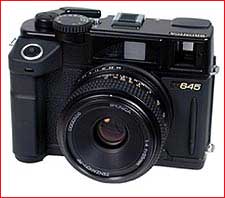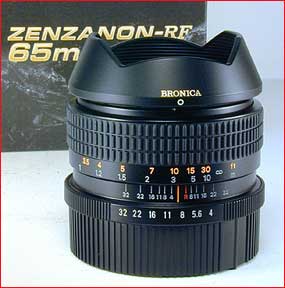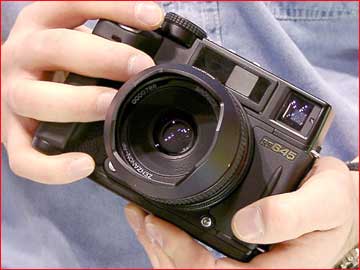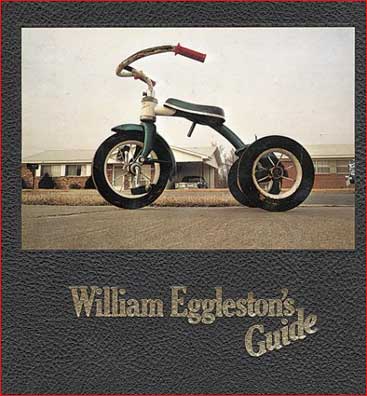The Bronica RF645 Rangefinder Revisited

Last Spring, Bronica sent me a big Pelican case containing an entire Bronica RF645 kit. At the time, I promised a follow-up to my "first impression" that was then circulating on the internet.
Right now, until March, Bronica is offering a whopping $450 rebate on this already pretty inexpensive camera, so now seems as good a time as any to revisit the unique, unusual RF645.
(Word to the wise: don’t stop reading too soon.)
First Things First
There’s no getting around this. The RF645, the first all-new Bronica since the medium-format manufacturer’s acquisition by the independent lensmaking giant Tamron, has been something very close to a fiasco.
There are three basic problems. Namely, the lenses, the lenses, and the lenses. This is probably a bit embarrassing to Tamron, since lensmaking is the company’s forté. Not that Bronica is any slouch in the optics department, either.
The three problems with the lenses, listed from leastest to mostest, are 3. There are only three, 2. The fastest is only f/4, and 1. Ahhh, ahem, well, yes, this is the biggie — Bronica consistently promised a 135mm telephoto for a long period of time surrounding the camera’s release, and then bailed.
That’s right, they bagged it. Actually, a number of 135mm lenses were made, but evidently Bronica then discovered that the RF645’s rangefinder baselength was not sufficient for the longer lens to be focused accurately without individual camera-to-lens calibration, so, rather than cope with the Pandora’s box of hassles that that would have created, they stopped production of the 135mm and, as quickly as they could scramble, ramped up to make a 100mm instead. As far as I know, most of the stock of 135mm lenses was bought up by retailer Robert White in England, and from what I hear, Robert White won’t sell one to you unless you agree to have your camera body calibrated for the lens.
Embarrassing. To say the least.
Shoppers have duly spanked Bronica-Tamron for all this. The what-about-the-135 imbroglio has been enough to turn the brand-new camera into a decided "also ran" for the majority of potential medium-format purchasers. 100mm just doesn’t stack up very well to the competition, even when we’re only talking about the rangefinder competition.
Next, considering that the Leica and Cosina-Voigtlander rangefinders’ stocks-in-trade are fast lenses for low-light work, the Bronica’s fastest lens speed of f/4 is…well, let’s just call it "underwhelming." As in limiting. As in, it’s gonna be a problem.
As in, slap your forehead and say, "I coulda had a two-eight!"
Finally, for an interchangeable-lens camera, the greatest strength of which is that you can, um, change lenses, having a whopping three choices at your disposal, while better than having just one lens superglued permanently to one body, is, well, notthat muchbetter than having just one lens superglued permanently to one body.
The lenses available are a 45mm, the 65mm normal that comes with the kit, and that shamefaced stop-gap 100mm (which turns out to be a nice portrait lens, but we’ll get to that). The 35mm equivalents would be 29mm, 42mm, and 65mm, calculated from the long dimension of the format. Adequate, thanks, but nothing to set the world on fire.
What has all this meant? Well, it’s meant that most potential buyers, being the conservative, wise comparative shoppers that we all know we are, have for the most part said thanks but no thanks. Which has led to, er, disappointing sales (I’m being very mature not to employ a more hyperbolic term like "catastrophic" here, don’t you agree?). Which has led to the nice, fat $450 rebate that’s currently in force. Which has brought the price of the "kit" consisting of the camera body and normal lens down to $1150. Maybe even less, depending on your shopping skills and how much persistence you can muster.
Second Things Next
The irony of all this (and it’s a rather considerable irony) is that the Bronica RF645 is just a super camera. It’s incredibly easy to use, quiet, very comfortable, portable, ergonomic as hell, and yields spectacular results with pretty much a minimum of fuss.

That slow little 65mm normal lens turns out to be a fabulous performer, a downright pretty lens. Ordinarily, lenses that are super-sharp tend to have rather jarring and ugly "bokeh" (out-of-focus blur). Lenses that have nice, soft, coherent blur are often not quite as sharp in the plane of focus, or else they don’t yield that nice soft blur until they’re stopped down. The Bronica’s "orthometer type" normal lens gives you the best of both worlds. You can argue all you want about which 35mm lens is sharpest, but this modest little 65mm paired with its nice big neg blows 35mm right into the tall grass. Comparing the two is like a race between a really fast sprinter and…a horse.
This does go part of the way towards making up for that slooooow f/4 maximum aperture. If you’re only satisfied with ISO 100 film in 35mm, for instance, you can get as-good-or-better quality with ISO 400 film in the Bronica. That doesn’tentirelymake up for the slow aperture, of course, but it takes some of the sting out.
I can’t resist offering kudos for the nifty lens shades, too. I love ’em.
The camera’s native vertical format is another big consideration. It takes about seven minutes to get used to. People whose shooting mostly runs to "landscape" (horizontal) orientation, or who don’t have seven minutes to spare, will want to be careful. Most people, though, will just notice that the viewfinder is large and bright and easy to see, with a good rangefinder patch that allows even those of us with middle-age eyesight to focus accurately with no trouble. Some people like, and some dislike, the way the bright viewfinder information is tucked considerately off to the side. I like it; I don’t want to be distracted by a bunch of numerals when I’m concentrating on what’s inside the framelines. Your taste may run the other way. Easy enough to see for yourself.
Well, what the heck, now is as good a time as any to make this basic point:. fact is, as with the viewfinder info, the vertical frame orientation, and the lack of a long lens, virtually all of the Bronica RF645’s potential drawbacks and negative points are served right up in plain view. Yup, there are only a few lenses; yeah, they promised and promised a longer tele, and then welched like big dogs; the orientation is vertical; the normal lens is dead normal, i.e., a little shorter than most medium-format normals; and so on down the list. The camera’s only real oddity, the little self-cocking wheezing noise it makes when you release the shutter, is also hard to miss prior to purchase. (Incidentally, although that little wheeze makes it seem like there’s some shutter lag, there really isn’t much. The shutter fires promptly, followed by the lion’s share of the release noise shortly thereafter. Lag isn’t really bad at all.) Summing up, I don’t think there’s a single thing lurking in the shadows waiting to bite you on the tush somewhere on down the ownership road.
All the camera’s hidden or less obvious features, synergies, and intangibles, on the other hand, every one, turn out to be good things. Unlike many medium-format cameras, the RF645 doesn’t feel like it was designed somewhere far back in the mists of time by little European guys who have long since gone to the Great Workshop in the clouds. It’s very nicely built — utilitarian, not precious, but good and solid. The controls are as well thought out as you’ll find on any camera. It’s easy to see what you’re taking pictures of. The meter is the business, and the control the camera gives you over exposure is considerable. It’s virtually as easy to use as a 35mm camera, if not more so, so straightforward and user-friendly is it. Heck, one buyer on photographyreview.com reports using it successfully as a point-and-shoot. And the results will float your boat for the duration of your association with it, pretty much guaranteed. If you can’t take dazzlingly sharp and gorgeous pictures with this thing that will make the neighbors and the in-laws ooh and ahh, well, Bub, you just need to give it up and get into another hobby.
‘By all that’s good and glorious take this counsel’

So having lived with it, would I recommend it? Depends, depends. Assuming you can live with all the evident setup and system limitations — let’s say, you ordinarily take pictures in plenty of light, such as outside, you like a slightly wide lens, you don’t need extreme secondary focal lengths, and you are willing to get used to (or even like) the unusual vertical orientation and the odd, endearing little mouse-whimper noise the shutter makes — assuming all those things — well then, it’s perfect. Honest. Well, damn close.
Would I recommend it as anonlycamera? No, I don’t think so. Too limited in low light. Would I recommend it as a first camera for someone making their maiden sortie into medium format? Hmm. Maybe. But…probably not. It would most likely give folks like that some weird ideas about what medium format’s all about. Would I recommend it as a first rangefinder? There, I don’t see any problem. This camera is as good as any at demonstrating rangefinder advantages, and, er, a bit better than most at demonstrating rangefinder limitations.
But would I recommend it as a second or third camera, especially to someone who’s already familiar with operating a rangefinder? You betcha. To someone who shoots with a bigger 645 SLR rig as their main box? A no-brainer. To someone who shoots 35mm but wants medium-format quality waiting in the wings? Oh yeah. To black-and-white photographers who want big negs and a sleeper of an excellent lens for fine-printmaking purposes? Absolutely. As long as you don’t need to depend on it for everything, and you’re looking for a walking-around camera that’s portable, easy and fun to use, and capable of results that can rival or surpass the best, you’ll probably really like it.
The kicker (and it’s a big, meaty, haul-off-and-whack-’em-in-the-arse kicker, too) is the current rebate, which takes the body / lens kit from being a solid bargain to being a spectacular one. For $1,150, we’re just taking Tamron to the bank, that’s all there is to that. No two ways about it, this is a hell of a lot of camera and lens for that price. Unless I’m messing up my research somehow, a Leica 35mm Summicron ASPH costs $1,495, and a Hasselblad 80mm f/2.8 CFE lens costs $1,875. Meaning, you’d spend considerably more for either lens and still be short a camera.
As for the Mamiya 7, another camera I like, yeah, you’ll probably want to think about that. But, again, the Mamiya’s equally slow normal lens costs a good C-note more than the whole Bronica kit’n’caboodle does. (At least here in der Homeland.) Bronica sells you a nifty lens and helpfully throws in the camera for free, you might say. Old sayings about looking gift horses in the mouth leap to mind.
Since I mentioned the Mamiya 7, a short digression on 645 may be in order: 6×7 is a great format, make no mistake about that. But I’ve always seen 645 as being a perfect compromise for exactly the kind of shooting this particular rangefinder is best at. It’s significantly bigger than 35mm, amounting, as it does, to a cropped 6×6, which I always crop anyway. Plus, the sixteen shots per roll compared to 6×7’s measly ten, the fact that the whole roll fits nicely on a contact sheet, the fact that the contacts are big enough to "read" without further enlargement, and the fact that the negative is still small enough to use relatively short focal length lenses on the camera and relatively affordable and available enlarging setups, has always seemed like a complete package of ideal compromises to my mind.
Oh, and about that 100mm lens, the one that came late to the party after all the fuss? Turns out, it makes a perfectly useful counterpart to the moderately wide normal lens. It scrubs off any hint of wideness, and is perfectly useful for relaxed (as opposed to tight) portraits. Just what you need. Given that a rangefinder is really not the tool for teles in the first place, this solution works fine, I think. Look, let’s face it, you’re not going to be tromping through the woods shooting warblers and chickadees with this thing anyway. Like most aspects of the RF645, the 100mm lens is better in practice than it is on paper.
So: not the camera for always, or every day. However, I enjoyed my time with the RF645, and came away with a real admiration for it. Should you feel any impulse to add it to your arsenal, I hereby place my bets that you are unlikely to be sorry once you’ve spent some quality time with an RF645 in your hands. Warmly recommended, the obvious caveats aside.
— Mike Johnston
SMP Book of the Week

William Eggleston’s Guide, photographs by William Eggleston, Essay by John Szarkowski. 2002, Museum of Modern Art (Distributed Art Publishers), ISBN 0870703781.
This week I’m going to renew the recommendation that I talked about in my column "Collecting Photography Books" two weeks ago. Simply put, this is a landmark book, an important volume in the history of 20th Century photography. It’s long been out of print, available only on the used market for hundreds and hundreds of dollars. Right now you have a short "window" of time to purchase the reprint for a measly $25. Anyone who has ambitions of building a photography book collection should purchase this book ASAP.
Here’s a linkto a good article that will explain this book’s significance.
- Content: A/C (some people love it, some people don’t; either way , it doesn’t change the rating, below).
- Reproduction quality: B
- Presentation: B+
- Bookcraft: B
- Synergy and intangibles: A
Overall Rating:*****
In a couple of weeks, I’ll have a page up that will explain the gradings and the overall rating in specific terms. The overall rating, however, is primarily a BUY RECOMMENDATION for the specific edition under review. The highest rating, five stars, which I promise willnotbe tossed around with abandon, means that a book is urgently recommended for purchase. Don’t hesitate; buy it while you can.
Mike Johnstonwrites and publishes an independent quarterly ink-on-paper magazine calledThe 37th Framefor people who are really "into" photography. His book,The Empirical Photographer, is scheduled to be published in 2003.
You can read more about Mike and findadditional articlesthat he has written for this site, as well as aSunday Morning Index.
You May Also Enjoy...
Panasonic GH5 Real World Autofocus and Low Light Test (Kind of)
You can argue that the Panasonic GH5 (Amazon)is a litmus test, telling us at least as much about the people who love it or loathe it

